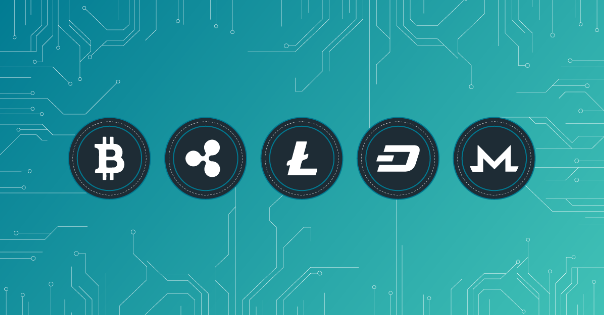In today’s digital world, safeguarding your financial information is more important than ever. With hackers employing increasingly sophisticated methods to gain access to debit and credit card information, it is crucial to be proactive in protecting yourself. This article will explore strategies to keep your cards secure, from understanding common threats to implementing practical solutions.
As technology advances, the risk of falling victim to financial fraud increases. Hackers use various techniques, such as phishing, skimming, and malware, to steal card information and commit fraud. Understanding these risks and taking preventive measures is essential to ensure your financial security. In this article, we will discuss practical steps you can take to protect your debit and credit cards from hackers, helping you stay one step ahead of cybercriminals.
Understanding the Threats
Common Methods Used by Hackers
Before we dive into the strategies for protecting your cards, it’s important to understand how hackers operate. Here are some common tactics they use to steal card information:
1. Phishing
Phishing is a form of fraud where hackers trick you into providing personal information, such as card numbers and passwords. They often use fake emails or websites that look legitimate to deceive you into entering your details.
2. Skimming
Skimming involves capturing card information using a small device installed on card readers, such as ATMs or gas pumps. These devices can store your card data, which hackers then use to create counterfeit cards or make unauthorized transactions.
3. Malware
Malware is malicious software designed to infiltrate your devices and steal sensitive information. Hackers use malware to access card information stored on your computer or smartphone.
4. Data Breaches
Data breaches occur when hackers gain unauthorized access to databases containing card information. These breaches can happen at any organization that processes card transactions, from online retailers to financial institutions.
The Impact of Card Fraud

Card fraud can have serious consequences, including financial loss, damage to your credit score, and stress from resolving fraudulent transactions. Protecting your card information is essential to avoid these negative outcomes.
Strategies for Protecting Your Debit and Credit Cards
1. Use Strong Passwords and Authentication Methods
Importance of Strong Passwords
Using strong, unique passwords for your online accounts is a critical step in protecting your card information. A strong password makes it more difficult for hackers to gain access to your accounts.
Tips for Creating Strong Passwords
- Mix Characters: Use a combination of uppercase and lowercase letters, numbers, and special characters.
- Avoid Common Words: Don’t use easily guessable information, such as birthdays or names.
- Use Different Passwords: Avoid using the same password across multiple accounts.
Enable Two-Factor Authentication (2FA)
Two-factor authentication adds an extra layer of security by requiring a second form of verification, such as a code sent to your phone. Enable 2FA on all accounts that offer it, especially those related to your financial information.
2. Monitor Your Accounts Regularly
Importance of Regular Monitoring
Regularly reviewing your bank and credit card statements helps you spot unauthorized transactions early, allowing you to take prompt action.
How to Monitor Your Accounts
- Set Up Alerts: Use transaction alerts provided by your bank or credit card company to receive notifications of any account activity.
- Review Statements Monthly: Check your statements monthly for any suspicious activity.
- Report Discrepancies Immediately: Contact your financial institution as soon as you notice any unauthorized transactions.
3. Use Secure Connections

Risks of Unsecured Connections
Using unsecured Wi-Fi networks can expose your card information to hackers. Always ensure your internet connection is secure when conducting financial transactions.
How to Secure Your Connection
- Avoid Public Wi-Fi: Don’t conduct financial transactions over public Wi-Fi networks.
- Use a VPN: A Virtual Private Network (VPN) encrypts your data, adding an extra layer of security.
- Secure Your Home Network: Change default router passwords and enable encryption.
4. Be Cautious with Sharing Information
Risks of Oversharing
Sharing too much personal information online can make you a target for hackers. Limit the information you share to protect your identity and financial data.
How to Limit Information Sharing
- Think Before You Share: Avoid sharing personal details on social media and untrusted websites.
- Review Privacy Settings: Adjust privacy settings on social media to control who can see your information.
- Only Share with Trusted Sources: Provide personal information only to trusted and verified sources.
5. Keep Your Devices Updated
Risks of Outdated Software
Outdated software can have security vulnerabilities that hackers exploit. Keeping your devices updated helps protect them from cyber threats.
How to Keep Devices Updated
- Enable Automatic Updates: Set your devices and applications to update automatically.
- Regularly Check for Updates: Manually check for updates if automatic updates are not available.
- Use Reputable Security Software: Install and maintain reputable antivirus and anti-malware software.
6. Be Aware of Phishing Scams
Importance of Recognizing Phishing Attempts
Phishing scams trick you into revealing personal information by posing as legitimate entities. Being aware of these scams helps prevent you from falling victim to them.
How to Recognize Phishing Attempts
- Check Email Addresses: Verify the sender’s email address for authenticity.
- Look for Red Flags: Be suspicious of urgent requests, grammatical errors, and unfamiliar links.
- Don’t Click Unverified Links: Avoid clicking on links or downloading attachments from unknown sources.
To learn more about scams you can check our topic on- 10 Financial Advices to Keep Yourself Safe from Online Scams
7. Use Credit Over Debit When Possible
Advantages of Using Credit Cards
Using credit cards offers additional protection against fraud compared to debit cards. Credit card companies often provide better fraud protection and are not directly linked to your bank account.
Tips for Using Credit Cards Safely
- Check Credit Card Statements Regularly: Monitor your credit card statements for any unauthorized transactions.
- Limit Credit Card Use to Trusted Merchants: Only use your credit card with reputable and trusted merchants.
- Keep Your Credit Card Information Secure: Don’t store your credit card information on unsecured websites.
8. Secure Your Physical Cards

Importance of Physical Security
In addition to protecting your card information online, it’s important to secure your physical cards to prevent theft and unauthorized use.
Tips for Securing Physical Cards
- Keep Cards in a Safe Place: Store your cards in a secure location when not in use.
- Don’t Carry Unnecessary Cards: Only carry the cards you need.
- Report Lost or Stolen Cards Immediately: Contact your financial institution as soon as you realize a card is lost or stolen.
9. Educate Yourself and Others
Importance of Education
Education is a powerful tool in combating card fraud. By educating yourself and those around you, you can create a safer financial environment.
How to Spread Awareness
- Share Knowledge: Inform friends and family about common scams and how to avoid them.
- Participate in Community Programs: Join or organize community events focused on financial security awareness.
- Stay Engaged: Continuously seek out new information and share updates with your network.
10. Use Virtual Card Numbers for Online Transactions
Benefits of Virtual Card Numbers
Virtual card numbers provide an additional layer of security for online transactions by generating a temporary card number that is linked to your actual credit card account.
How to Use Virtual Card Numbers
- Check if Your Bank Offers Virtual Cards: Contact your bank or credit card provider to see if they offer virtual card numbers.
- Use Virtual Cards for Online Purchases: Use virtual card numbers for online transactions to protect your actual card information.
- Monitor Virtual Card Transactions: Regularly review your virtual card transactions for any unauthorized activity.
Final Thoughts
Protecting your debit and credit cards from hackers requires a combination of knowledge, vigilance, and proactive measures. By following these ten strategies, you can significantly reduce your risk of falling victim to card fraud. From using strong passwords to securing your physical cards, every step you take contributes to your financial security. Remember, the digital world is ever-evolving, and so should your strategies for protecting your financial information. Stay informed, stay cautious, and empower yourself with knowledge to safeguard your cards from hackers.




































